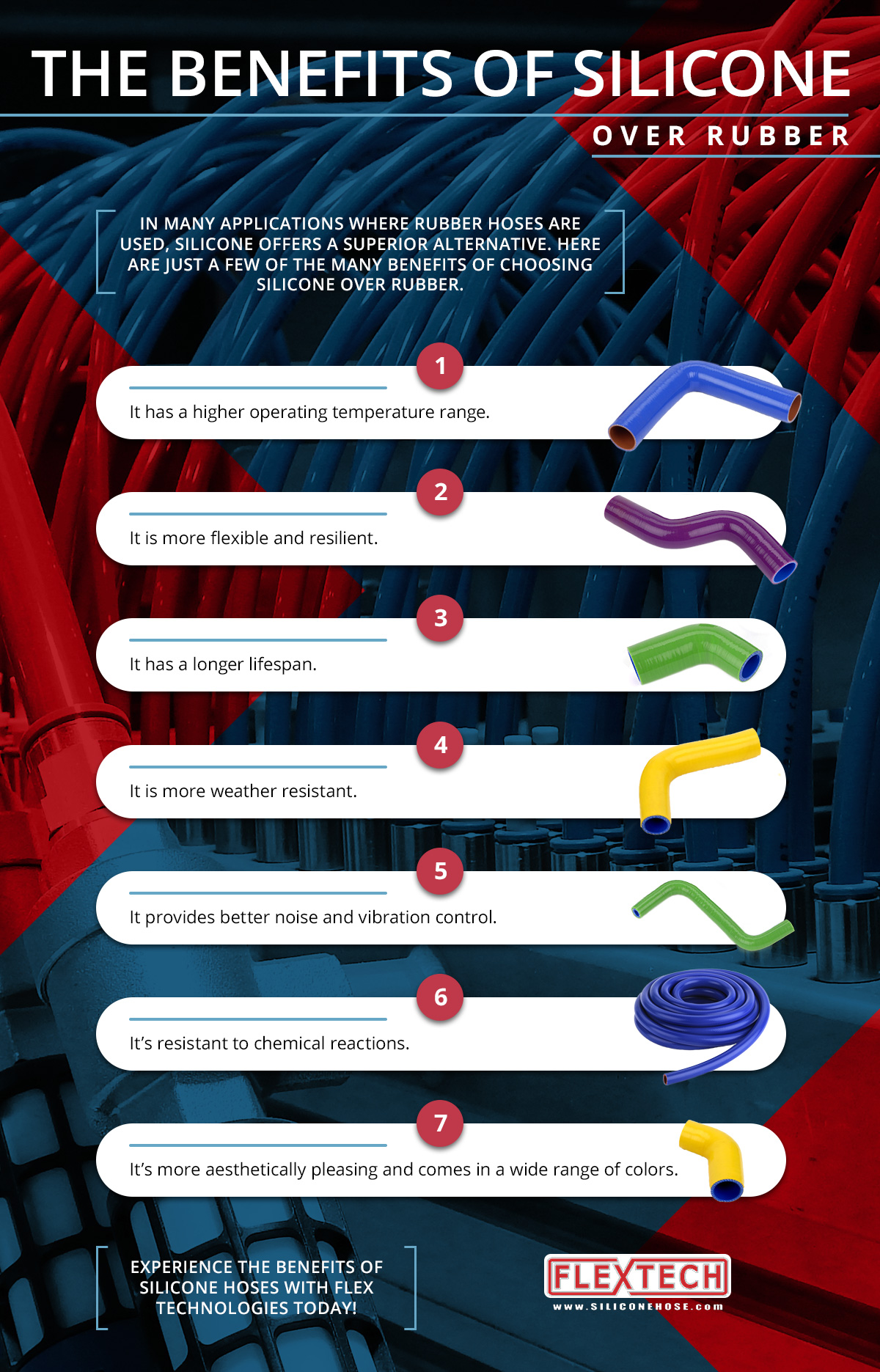![]()
If it has crossed your mind to upgrade your vehicle’s rubber radiator hoses to silicone ones, you might be wondering what the benefits and drawbacks are for both options and whether it’s worth it to go for silicone. Here’s a quick rundown of the pros and cons of each type.
Benefits of Silicone
Operating Temperature Range
Silicone hoses are capable of carrying fluids at much higher temperatures than rubber. If you’re building a racing vehicle or adding a turbocharger to your engine, silicone is the way to go. Our hoses have a max temperature of 350 degrees F (177 degrees C) compared to standard EPDM rubber hoses that have a max temperature of 257 degrees F (125 degrees C). That’s almost a hundred degrees of difference. EPDM rubber is a synthetic rubber; organic rubber performs even worse and may soften and deform irreversibly at temperatures greater than boiling point (212 degrees F / 100 degrees C).
Flexibility and resilience
Silicone hoses have superior flexibility to rubber ones, and they maintain this flexibility over their lifespan, while rubber does not. This reduces the risk that your hoses will split, explode, harden, or become dry rotted over time.
Lifespan
Silicone hoses last practically forever and might possibly outlast your car. Because they have such a long lifespan, they can average out to a lower cost per mile compared to rubber hoses, even though their upfront cost is higher.
Weather resistance
One of the advantages of silicone tubing over rubber is that it is virtually unaffected by environmental factors such rain, snow, heat, humidity, drought, UV rays, and ozone. Rubber deteriorates faster in these conditions. This makes silicone a great choice for vehicles that will be driven in harsh environments.
Noise and vibration control
While rubber can be a source of noise due to the friction between the rubber and the mating surface, silicone has a good ability to dampen sounds and vibrations, keeping a quiet and stable profile. Incidentally, this is also a good argument for silicone hoses over aluminum ones, as the aluminum is a rigid material that must be coupled to a vibrating surface, requiring the use of a cushioning substance in the joints, and creating four sites that must be clamped rather than just two, effectively doubling your potential leak sites.
Inert material
Silicone is an extremely inert material that resists chemical reactions with other substances. Therefore, it won’t corrode or adhere itself to surrounding parts like the thermostat or the crossover pipe the way rubber can. It’s unlikely to bond to stems, so when you take off a hose, it’s just as easy to take off as it was to put on. This makes silicone a reliable choice for vehicle applications.
Bling factor
We think vivid red or blue silicone looks amazing. Opening up the hood and seeing those colors that pop just evokes a little extra happiness. But even if you’re not up for that extra bling factor, you can also get silicone tubes in black.
Drawbacks of Silicone
Permeability to oil and fuel
The molecular structure of silicone doesn’t play well with oil, fuel, and other oil-based products. We do not recommend using silicone hoses for any applications where they will come in contact with fuel or oil.
Permeability to water molecules
Silicone is watertight, but water vapor can escape very slowly through the walls of the hose. Think of a balloon that you blow up with air and leave on a table for a week. The air escapes very, very slowly through the walls of the balloon. There’s a similar effect with silicone, and if you have silicone hoses on a car that you use as a daily driver, you’ll find yourself having to replace water in the reservoir from time to time - not because you have a leak, but simply because the water is escaping through the walls of your hose. While silicone hoses are a must for racing applications, some people don’t like them in a daily driver.
We are confident that you’ll love the quality and reliability of our silicone hose that’s made right here in the USA. Shop today!
 Default Currency
Default Currency
 Mexican Pesos
Mexican Pesos
 Canadian Dollar
Canadian Dollar



